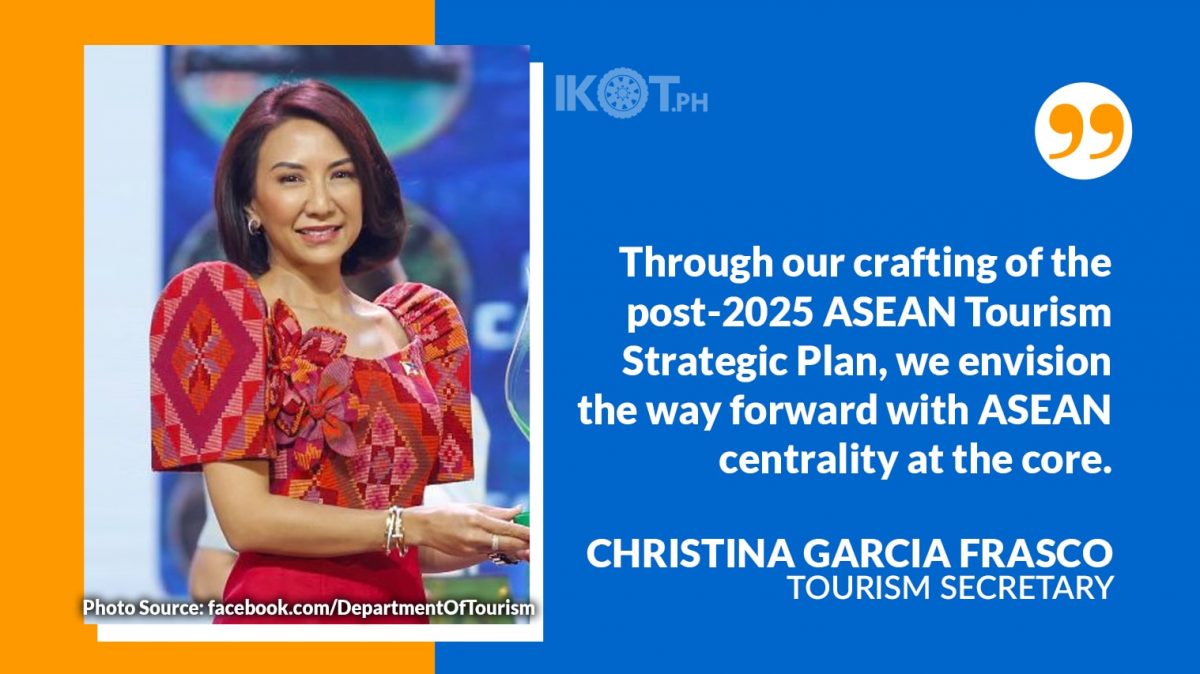The Philippines takes the crucial role of lead country coordinator on the development of the ASEAN Tourism Strategic Plan (ATSP) post-2025.
The ATSP outlines the region’s strategies to increase the number of visitors to the Southeast Asian region.
Through the crafting of the ASEAN Tourism Strategic Plan, the organization envisions that by 2025, ASEAN will be a quality tourism destination offering a unique, diverse ASEAN experience, and will be committed to responsible, sustainable, inclusive, and balanced tourism development, to contribute significantly to the socio-economic well-being of ASEAN people.
“The Philippines will continue to champion change that will strengthen our institutions, improve our decision-making, and uphold ASEAN Centrality.”
“During the 43rd ASEAN Leaders Summit hosted by Indonesia last September, our President Ferdinand Marcos, Jr. stressed that the ASEAN is poised to improve its macroeconomic fundamentals through the steady rise in intra-ASEAN trade and foreign direct investment inflows. To this end, he committed that the Philippines will always continue to strive to maintain ASEAN as a competitive and integrated regional economy. The Philippines will continue to champion change that will strengthen our institutions, improve our decision-making, and uphold ASEAN Centrality,” said DOT Secretary Christina Garcia Frasco who represented the Philippines during the ASEAN Tourism Forum recently in Vientiane, Laos.
As the representative of the lead country coordinator, Frasco presented the results of a survey participated in by ASEAN member states focused on knowing the current tourism trends and challenges as well as recommended future trends and priorities to support our region and individual countries and localities.
The internal survey identified the current trends in tourism, emerging products, current challenges, and the projected priorities, as well as the focus of tourism according to the member states.
Recommendations were also presented to support tourism in the region.
“Through our crafting of the post-2025 ASEAN Tourism Strategic Plan, we envision the way forward with ASEAN centrality at the core,” the tourism chief said.
“In the same way that the Philippines envisions its transformation as a tourism powerhouse in Asia, so, too, should we aspire for transforming the ASEAN region into a tourism powerhouse of the world.”
“In the same way that the Philippines envisions its transformation as a tourism powerhouse in Asia, so, too, should we aspire for transforming the ASEAN region into a tourism powerhouse of the world,” the tourism head added.
It can be recalled that the Philippines was also the Lead Country Coordinator for the development of the ASEAN Tourism Strategic Plan for 2011-2015 and 2016-2025.
The meeting was also attended by ASEAN Secretary General Dr. Kao Kim Hourn; Brunei Darussalam Minister of Primary Resources and Tourism Data Dr. Abdul Manaf Metussin; Cambodia Minister of Tourism Sok Soken; Indonesia Minister of Tourism and Creative Economy Sandiaga Salahuddin Uno; Lao PDR Minister of Information, Culture and Tourism Suanesavanh Vignaket; Malaysia Minister of Tourism, Arts, and Culture Dato’ Sri Tiong King Sing; Myanmar Union Minister of Hotels and Tourism Thet Thet Khine; Singapore Chief Executive of Singapore Tourism Board Melissa Ow; Thailand Minister of Tourism and Sports Sudawan Wangsuphakijkosol; Vietnam Minister of Culture, Sports and Tourism Nguyen Van Hung; and Timor Leste Vice Prime Minister, Coordinating Minister for Economic Affairs, and Minister for Tourism and Environment Francisco Kalbuadi Lay.


